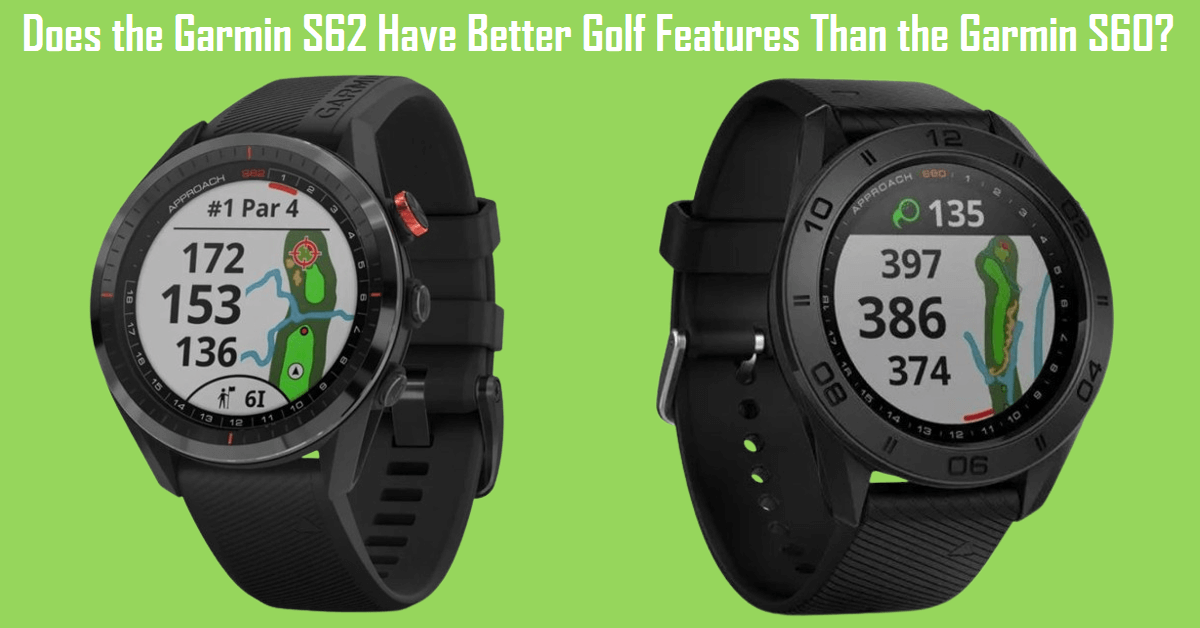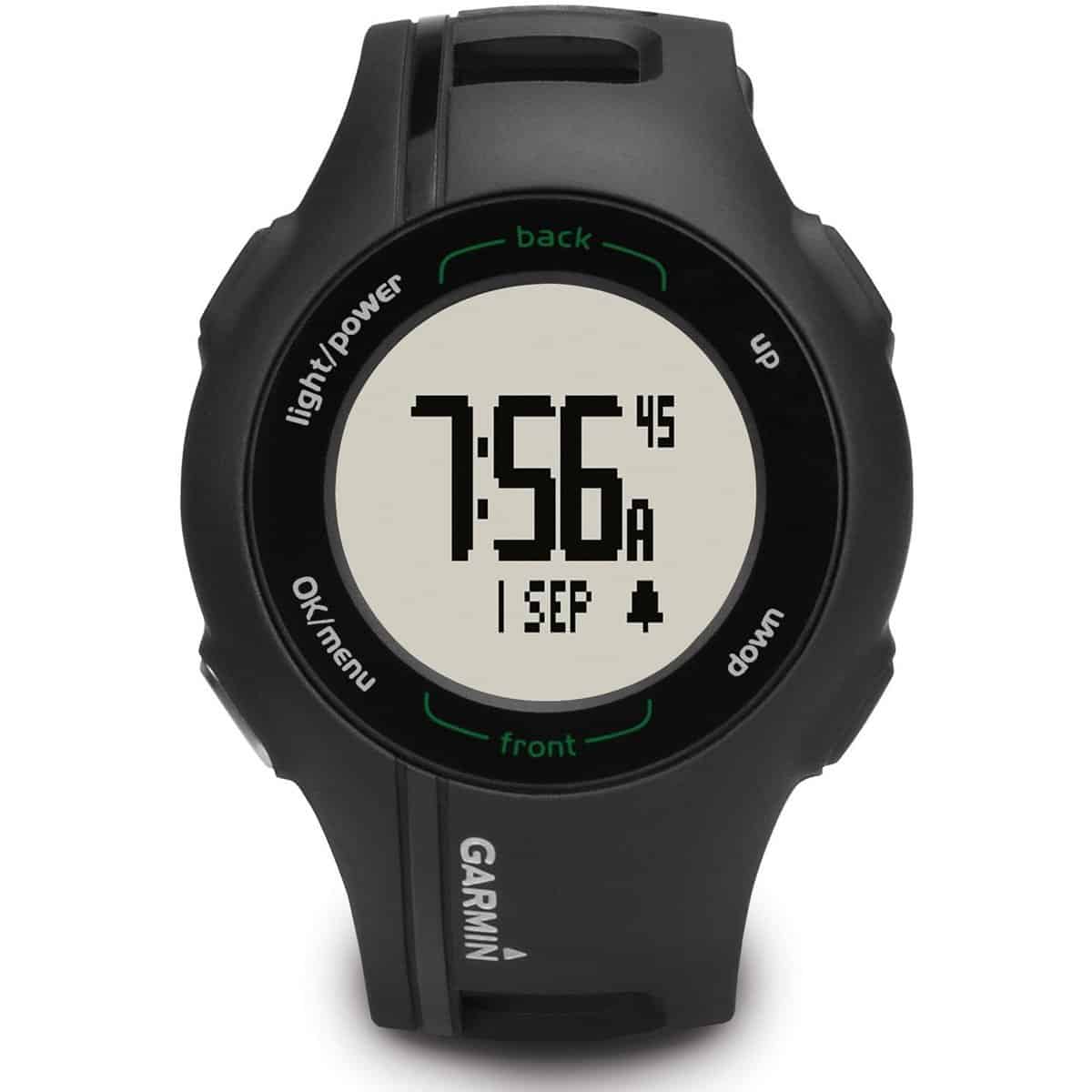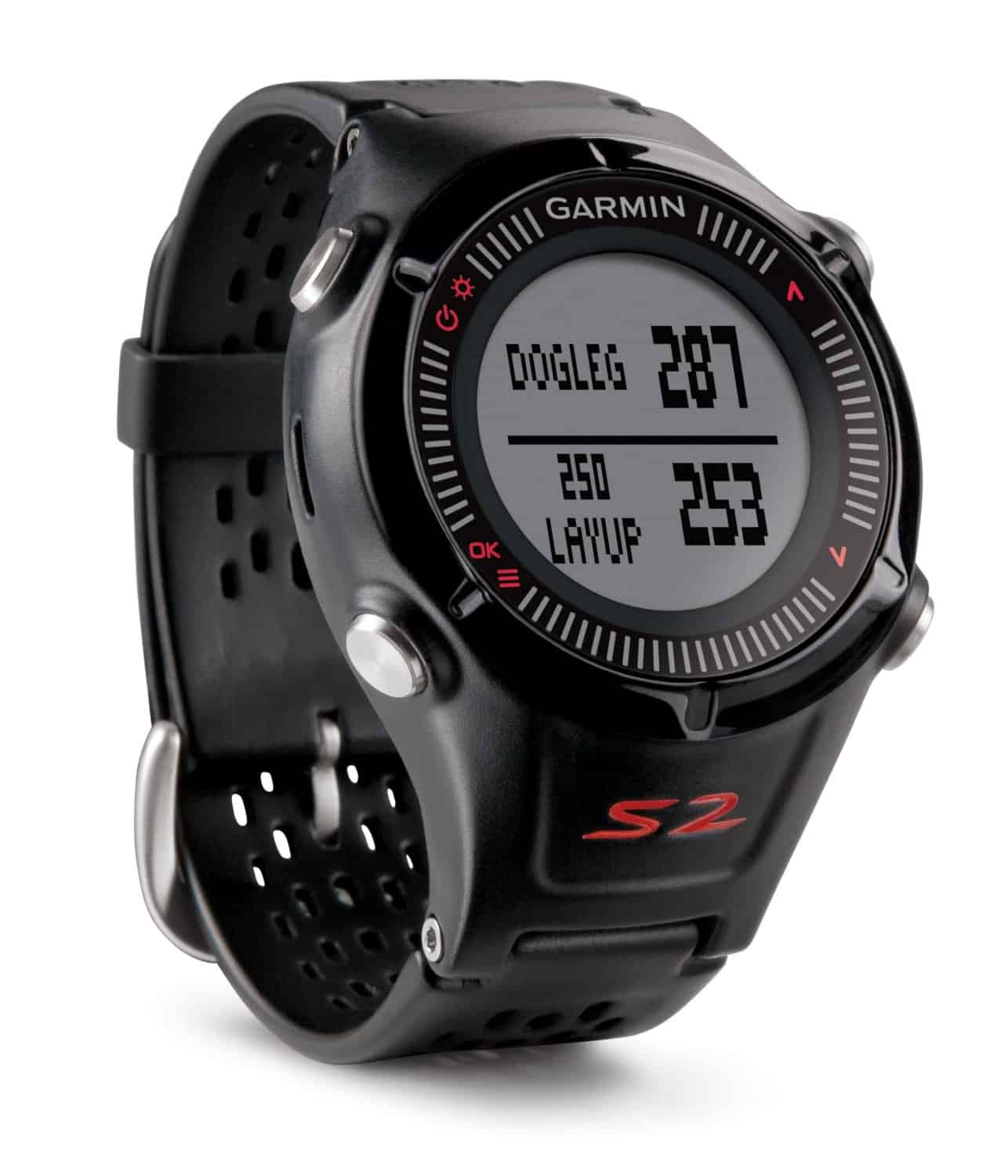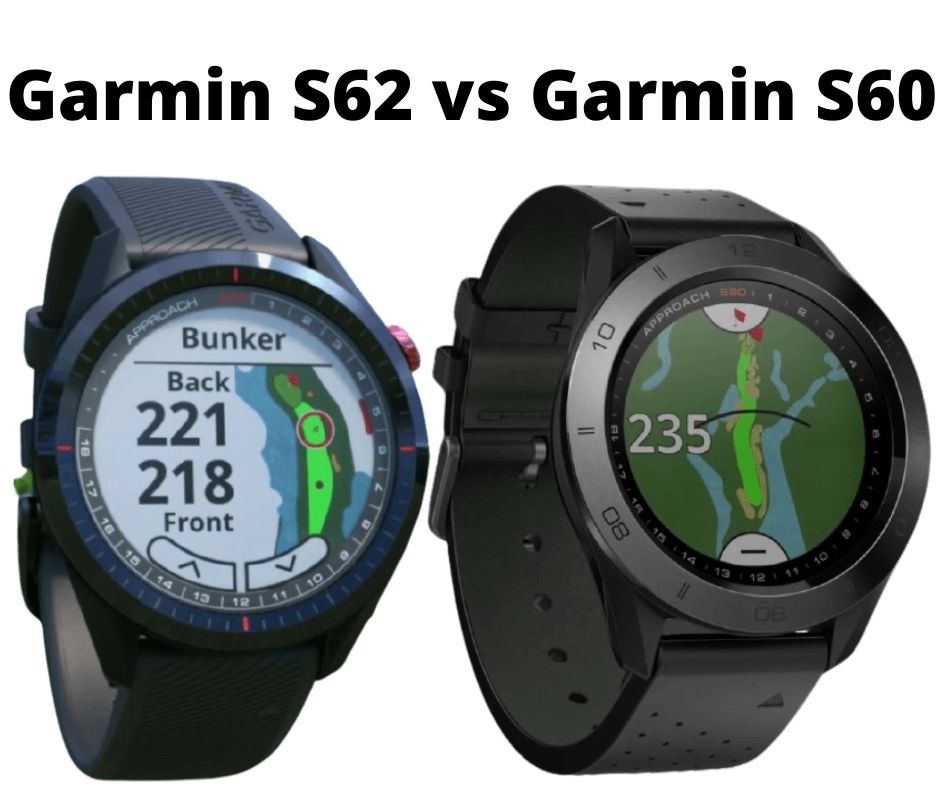Key Takeaways
- The Garmin S60 and S62 can be used for running but they are not considered good running watches because they can only work for basic running but come up short for race-focused training compared to flagship sports watches designed specifically with advanced runners in mind. The Garmin s70 has better running features than the s62 and s60 because it comes with a virtual running partner and customized interval running workouts. The Garmin s70 is one of the highest rated golf gps and fitness tracking watches on the market.
- The S62 and S60 provide accurate tracking of time, pace, and distance for indoor and outdoor runs.
- Activity tracking profiles for basic run types and foot pod support cover the basics but lack advanced dynamics.
- The S62 measures heart rate variability and blood oxygen saturation – the S60 lacks wrist-based heart rate.
- They enable customization of data pages and syncing with Garmin Connect but have limits versus premium watches.
- Key features missing compared to the Garmin Forerunner 965: stride length, ground contact time, vertical oscillation, running power, race time prediction, VO2 max, heart rate zones, pacing strategies, virtual training partner, and recovery time estimates.
- Better suited for new runners and casual athletes than hardcore racers training for marathons and beyond.
- The S62 gets a tentative recommendation for recreational runners on a budget, while the S60 has more limitations
- For serious run training, look at the best running watches for 2024 like the Garmin Forerunner 955/965 or Fenix 7 series that also come with onboard music storage instead.
Table of Contents
- 1 Are the Garmin S62 and S60 Good Running Watches?
- 2 Running Features in the Garmin S62 and S60
- 3 Heart Rate and Pulse Ox Sensors
- 4 How the S62 and S60 Compare to the Best Garmin Running Watch
- 5 Recommendations on Who The S62 and S60 Can Work For
- 6 The Final Verdict: Are the S62 and S60 Good Running Watches?
Are the Garmin S62 and S60 Good Running Watches?

I was curious to test out Garmin’s S62 and S60 golf watches to see if they had running metrics and features to help me with my daily training runs and long weekend trails. I’ve gone through my fair share of running watches over the years and have a good sense of the features that are must-haves for logging runs and tracking my performance.
When the S62 and S60 were announced, I was intrigued by Garmin’s claims of enhanced sensors for tracking pace, distance, heart rate, and more during indoor and outdoor runs. However, I was skeptical about how they would stack up for serious runners compared to top tier running watches I’ve used in the past like the Forerunner 965.
So I took the S62 and S60 out for extensive testing on my neighborhood routes, park trails, and treadmill runs at the gym. I evaluated the activity profiles, GPS connectivity, foot pod integration, heart rate tracking capabilities, and more. After multiple weeks of use, I gathered my thoughts on the important aspects like:
- Accuracy of distance, pace, elevation data
- Heart rate monitoring during high intensity intervals and long runs
- Ease of customizing data pages and settings
- Battery life and GPS connectivity consistency
- Breadth of running-specific features
The goal of my testing was ultimately to answer the important question: are the Garmin S62 and S60 good running watch options compared to premium alternatives on the market?
Based on my experience training with the S62 and S60, I’ll give my verdict on how well they performed for running. I’ll also compare what critical features are missing for runners compared to Garmin’s leading sports watch, the Forerunner 965.
Running Features in the Garmin S62 and S60
I put the S62 and S60 through a wide range of runs to test the activity profiles and sensors relevant for runners. Here’s an overview of how they performed.
Indoor Running Tracking
When I took the S62 and S60 to the indoor track at my gym and onto the treadmill, they relied on the built-in accelerometer rather than GPS to track my pace, distance, and cadence. I found the accuracy decent for more steady runs but lagging for interval training.
The indoor activity profiles like Indoor Track Running were useful for logging different sessions. However, the watches don’t distinguish specific workouts beyond just “indoor running”.
| Feature | S62 | S60 |
|---|---|---|
| Indoor Running Profile | Yes | Yes |
| Built-In Accelerometer | Yes | Yes |
| Foot Pod Capability | Yes | Yes |
Here’s a detailed list of my testing process and performance:
- Tested pace accuracy for 2 mile continuous run and 800m repeats
- Found distance and elapsed time were fairly accurate but pace lagged for faster intervals
- Tested sensor accuracy for runs holding treadmill handlebars -cadence was less accurate
Outdoor GPS Tracking
Heading out to the local trails and parks, the GPS connectivity was pretty quick to connect and accurately tracked my runs without significant wander. The S62 and S60 use the built-in GPS to track my time, distance, and pace during outdoor runs but it does not have access to the GLONASS satellite systems the Garmin Forerunner 965 has access to.
I tested the watches on runs ranging from easy 30 minute jogs on city streets to long 2+ hour trail runs in varying tree coverage and terrain. The distance and pace data were solid for running on city streets but a lot less accurate for trail runs with dense tree coverage.
Why is a Foot Pod Important for Running?
A foot pod is an important accessory for the Garmin S62 and S60 running watches when training indoors or in GPS-compromised environments. Adding a foot pod provides crucial activity tracking redundancy and accuracy for indoor training while optimizing outdoor accuracy and battery efficiency – making them valuable accessories for the S62 and S60 running watches. Listed below are some important reasons it provides valuable functionality:
Indoor Tracking Accuracy
The foot pod uses accelerometers to precisely measure cadence, pace, and distance when running on a treadmill or indoor track. This provides better accuracy than the watch’s wrist motion sensors alone, resulting in more reliable tracking of splits and mileage.
Supplements Weak GPS Signals
Foot pods fill gaps when GPS signals drop on remote trails or in urban areas between tall buildings. They ensure pace, distance and running dynamics don’t get skewed by wandering GPS marks.
Calibration for Precise Metrics
By calibrating the foot pod accelerometers through comparison to GPS pace and distance measurements from timed outdoor runs, the sensors can be tuned for optimal reliability. This helps further refine accuracy when leveraging the foot pod for indoor or GPS-absent training.
Extended Battery Life
Relying on the low-power foot pod sensor data helps conserve watch battery life during long indoor runs since demanding GPS isn’t required. This provides significantly longer workout battery life.
Heart Rate and Pulse Ox Sensors
The S62 comes with the Garmin Elevate wrist heart rate monitor which I’ve found fairly accurate for steady pace runs. It also has a pulse ox sensor for measuring my blood oxygen saturation levels.
Meanwhile, the S60 lacks a wrist-based heart rate monitor and does not have a pulse oximeter as well.
The S62’s wrist-based heart rate monitoring and pulse ox sensor offer key physiological tracking that ambitious runners rely heavily on for structured training. But the S60 disappointingly omits these metrics entirely – losing crucial visibility for runners focused on continual fitness and performance gains.
| Feature | S62 | S60 |
|---|---|---|
| Wrist Heart Rate | Yes | No |
| Pulse Ox Sensor | Yes | No |
One critical aspect I tested was the heart rate tracking and pulse oximetry sensors equipped on these watches. These metrics can be vital for monitoring training intensity and adaptation.
Heart rate tracking and pulse oximetry measurements are critical running watch features for a few important reasons:
Heart Rate Monitoring
Wrist-based or chest strap heart rate monitoring allows runners to:
- Accurately quantify workout intensity for different training zones – crucial for optimizing adaptation
- Enable capabilities like lactate threshold guidance, VO2 max tracking, recovery advising that rely on heart rate variability
- Analyze workload, stress levels and adaptation to prevent overtraining
- Provide calorie burn estimates based on elevated heart rate during exercise
- Customize heart rate zone alerts to stay in effective fat burning or endurance ranges
Without real-time heart rate feeds, crucial intensity and adaptation insights are lost. It leaves guesswork for pacing target zones.
Pulse Oximetry
Meanwhile, the pulse oximeter on advanced watches like the Garmin S62 measures oxygen saturation in the bloodstream. This helps runners:
- Monitor how efficiently oxygen is circulated during workouts
- Quickly detect drops in saturation levels at altitude for safety
- Analyze respiration adaptation when training specifically for mountains or trails
- Provide additional body stress measurements to balance training load properly across intense workload
Much like heart rate, pulse oximetry readings empower runners to train more precisely at varied intensities for tailored adaptation. Missing these sensors, as with the S60, significantly hampers insight into workout effectiveness and body responses.
Here were some key tests I ran to evaluate sensor performance:
- Compared S62 heart rate to chest strap on interval workouts
- Evaluated S62 pulse ox readings at altitude on hiking trail
- Attempted using S60 without separate heart rate monitor
The S62 wrist heart rate lagged a bit for high intensity intervals but matched my chest strap decently during steady trail runs. The pulse ox data also aligned with how I felt at 10K feet elevation.
However, the S60 proved unusable for my training without at least pairing an external heart rate monitor via ANT+ or Bluetooth. Without wrist-based heart rate, I was flying blind on pacing and intensity.
So for runners focused on zone training, high intensity intervals, or altitude acclimation – the S62 has a clear advantage over the S60.
Customization of Data Pages and Settings
An often overlooked aspect is just how easy and intuitive a watch is to setup and customize for your training needs.
I found the S62 and S60 decent for setting up multiple data pages showing pace, distance, heart rate, cadence, and other running metrics. However, they lagged behind top tier options such as a multisport watch from the Fenix or Forerunner series because it has less flexibility to create customized workouts, training plans, and more advanced data pages.
The Garmin Connect app provides solid utility for syncing activity data, updating watch firmware, customizing alerts and data fields. But there are still limits in tailoring the watches specifically for ambitious runners.
How the S62 and S60 Compare to the Best Garmin Running Watch
I couldn’t fully evaluate if the S62 and S60 qualify as good running watches until I directly compared them against the cream of the crop – the Garmin Forerunner 965.
The Garmin Forerunner 965 stands as the most advanced running watch on the market today thanks to incredibly rich physiological tracking capabilities, innovative training features, and highly tailored customization for runners.
As Garmin’s newest flagship, the Forerunner 965 sets lofty expectations for what runners should now demand from a GPS watch to truly enhance training.
I took the Forerunner 965 out on runs side-by-side to identify strengths it has over the S62/S60 specifically for runners.
Unfortunately, my testing revealed the Garmin S62 and S60 lag well behind the Forerunner 965 in vital areas – hampering their viability as a dedicated running watch for serious athletes.
Running Dynamics
While the S62 provides wrist-based heart rate, both it and the S60 lack crucial running dynamics like:
- Stride Length: Measures distance between steps to target optimal efficiency
- Ground Contact Time: Time feet are on ground each stride to tweak turnover
- Vertical Oscillation: Quantifies bounce height to prevent wasted motion
- Running Power: Measures workload and intensity to quantify and progress training load
- VO2 Max Estimates: Benchmarks aerobic fitness to tailor paces for progression
These biomechanics insights help fine tune form, economy, technique and reduce injury risk – but are totally missing from the S62/S60.
Without these key details on form efficiency, biomechanics issues, muscular load, and cardiovascular fitness, runners lose out on vital visibility into adaptive triggers and early signs of overtraining.
Race Time Prediction
The Forerunner leverages performance metrics and training data to forecast:
- Finish times for common race distances like 5K up through the marathon
- Customized race day pace targets based on fitness to strategize effort
Without these projections, the S62 and S60 limit ability to set data-driven goals and execution plans.
Minimal Custom Training Features
Also the S62 and S60 don’t offer specialty running features the Forerunner 965 contains like:
- Grade-Adjusted Pace: Accounts for hills and altitude for GPS pace accuracy
- Hill Split Detection: Automatically flags tough uphill/downhill segments
- Hill Score: Quantifies difficulty/benefit of elevation during runs
- PacePro Pacing Strategies: Provides real-time uphill/downhill pace guidance for events
- Virtual Run Partner: Offers adaptive pacing targets based on performance
- Recovery Time: Estimates post-run rest needs based on workout strain
- Advanced Workouts: Creates custom running-centric sessions with target metrics
- Trail Run Auto Climb: Tracks ascent details even without GPS signal on dense trails
Lacking these unique innovations restricts the training guidance and motivation the S62/S60 can provide during key workouts.
Inflexible Customization
Also while the S62 and S60 enable some customization of data pages and alerts, the Forerunner 965 allows immensely more tailoring.
For example, runners can build personalized workouts, training calendars, recovery prescriptions, race predictors, and advanced data displays.
This flexibility to craft specialty tracking pages with rich graphs and metrics entirely customized to your needs makes an enormous difference for race-focused training.
So the polished physiological tracking, motivation features, and adaptive training guidance missing on the S62/S60 seriously hampers their viability as hardcore running watches. They may cover basics, but lack the specialization top athletes require.
Key Running Features Missing from the S62/S60
While the S62 and S60 check the basic boxes for tracking runs, they lack more advanced capabilities that ambitious runners rely on.
| Feature | S62 | S60 | Forerunner 965 |
|---|---|---|---|
| Running Dynamics (Stride Length, Ground Contact Time, Vertical Oscillation) | No | No | Yes |
| Running Power | No | No | Yes |
| Race Time Prediction | No | No | Yes |
| Hill Score | No | No | Yes |
| Virtual Training Partner | No | No | Yes |
| Recovery Time Estimates | No | No | Yes |
| VO2 Max | No | No | Yes |
| Pacing Strategies | No | No | Yes |
| Trail, Virtual, and Ultra Running Tracking Profiles | No | No | Yes |
| Advanced Running Workouts | No | No | Yes |
| Onboard Music Storage | No | No | Yes |
Recommendations on Who The S62 and S60 Can Work For
While the S62 and S60 fall short of meeting hardcore runners’ needs, they can still serve beginner and recreational runners well for basic tracking.
Here are the types of runners I’d recommend the S62 or S60 to:
- New runners just getting started with training for 5Ks or 10Ks
- Charity/fun run participants who want basic pace and distance data
- Trail hikers who mix in occasional light jogs on paths with no tree coverage
They provide enough tracking capabilities for simple fitness training plans and moderate runs.
However, they are likely not suitable GPS watches for:
- Marathoners or triathletes training for PR attempts
- Ultramarathon competitors needing advanced power conservation
- Obstacle course racers requiring ruggedness
So while they technically can be used by nearly any runner, I’d caution against relying solely on the S62 or S60 for race-specific training beyond half marathon distances.
For newer or casual runners, they offer decent value given budget prices under $400. But more devoted athletes will want to look at pricier yet full-featured options like the Forerunner 955/965 series instead.
| Type of Runner | Recommended? |
|---|---|
| New Runner | Yes |
| Training for 5k/10k | Yes |
| Marathoner | No |
| Triathlete | No |
| Ultramarathoner | No |
| Obstacle Course Racer | No |
The Final Verdict: Are the S62 and S60 Good Running Watches?
While the S62 and S60 offer decent ability to track basic run metrics, I encountered limitations that serious runners need to consider before purchasing.
The upside is that they provide accurate distance along with activity profiles for indoor and outdoor runs. Even though the S62 comes with a heart rate monitor, I was disappointed that it does not measure heart rate variability for recovery and training load focus.
Therefore, the lack of running dynamics, advanced workouts, onboard music, and diversity of activity profiles hamper their capabilities for athletes training for anything beyond casual 5ks or charity events.
I’d caution against choosing the S62 or S60 as your primary GPS running watch for heavy training or racing. They can complement other devices but generally lack the polished features that Garmin’s Forerunner line contains specifically for runners.
For me, as an aspiring ultramarathoner targeting some 50 milers this year, I need extremely robust battery life, trail running activity profiles, running power, and advanced physiological metrics. The S62 and S60 simply don’t check those boxes.
But that doesn’t make them poor options for all runners. Just be realistic about their limitations if you train seriously for marathons or beyond.
The main pros are:
- Accurate GPS tracking of pace and distance
- Activity profiles for both indoor and outdoor runs
- Easy to view run data on display and Garmin Connect app
- S62 provides heart rate monitoring and pulse ox
- Budget price under $400
However, the important cons that impacted high mileage training are:
- Lack advanced running dynamics and race prediction
- Missing diverse run profiles like trail or ultra running
- Limited customization of data pages and alerts
- S60 has no wrist-based heart rate sensor
- Battery life capped at around 10-14 hours GPS (low in comparison to the 30 hours of GPS battery life for the Forerunner 965)
So if you’re logging moderate mileage focused mostly on easy jogs, the S62 and S60 can capture the basics like distance, time, and pace but only the S62 can track heart rate. However, I’d hesitate relying on them for hardcore marathon or triathlon training given gaps in comparison to premium Garmin running watches, such as the Forerunner and Fenix hardcore running watches.




